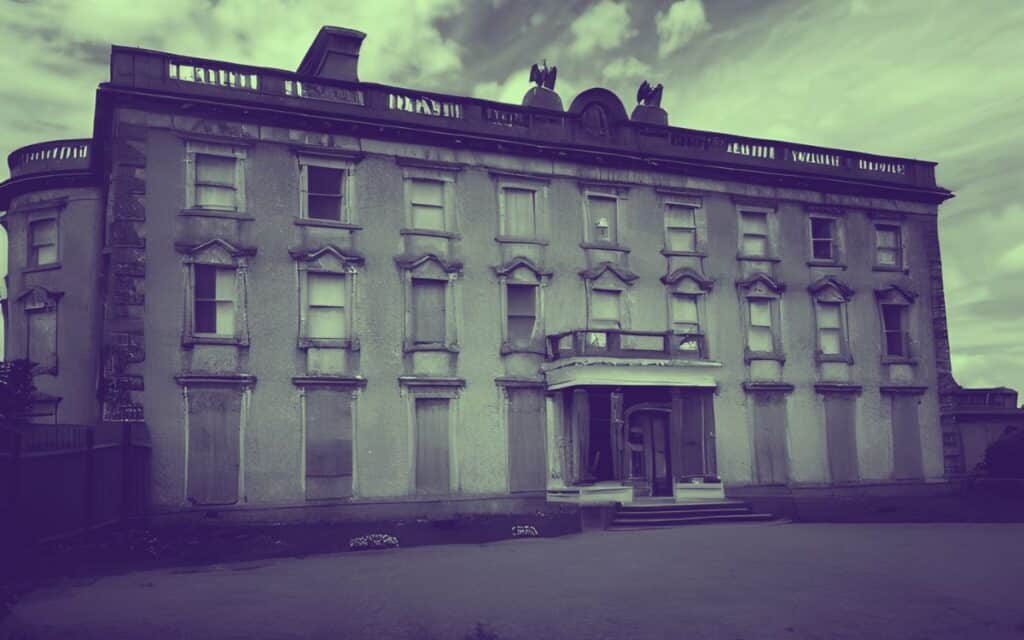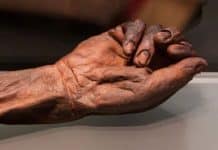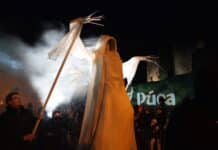Loftus Hall in County Wexford is a hotbed of paranormal activity. Guest writer HELENA B. SCOTT takes us beyond its myths and legends and reveals ley lines and celestial secrets

Loftus Hall, Ireland’s most haunted house, stands resilient, once again forgotten and abandoned, just beyond the coastal village of Fethard-on-Sea. It is nestled on the windswept tip of the Hook peninsula; a mysterious and alluring landscape that has attracted invaders from monks to Vikings and from Normans to Knights Templar.
History of Loftus Hall
The haunted history of Loftus Hall traces back to the Norman Redmond family, starting with Raymond Le Gros, a key figure in Ireland’s first Norman invasion, who is buried at Molana Abbey in County Waterford on land he donated to the Knights Templar for the building of a preceptory.
After the original castle on the Hook Peninsula deteriorated, Le Gros’ descendants built Redmond Hall, later renamed Loftus Hall by Henry Loftus in 1666 after the Cromwellian confiscations.
Over centuries, this grand house has masqueraded under many guises, housing two religious orders and even becoming a hotel, before falling into a period of neglect while vacant for a decade.
This era saw the hall suffer vandalism and misuse for satanic rituals until it was bought and used as a haunted tourist attraction for just over another decade.
Loftus Hall was sold in 2021, destined to become a hotel once again as “Ladyville House.” Currently, it stands empty, its future uncertain, holding onto its secrets like a forgotten tale waiting for its next chapter.
Dark Tale of the Devil at Loftus Hall
But beneath the surface of Loftus Hall lies an untold story, far more chilling than the popular myth that has circulated through the ages—an eerie tale involving the devil, a fateful card game, and the tragic Lady Anne Tottenham.
Having lived on the Hook Peninsula for nearly five years, I embarked on a journey to unravel the mansion’s enigmatic narrative.
What I discovered was a haunting reality, and something that was hard to “unfeel”; the land or demesne of Loftus Hall was clearly screaming out something which I could not ignore, guarding an even darker secret and older story. A story hidden in plain view, and which appeared on the ornate tiled floor leading to the morning room, clearly reflecting the hermetic principle “as above, so below”.
Centuries after people first built sacred sites, a British archaeologist named Alfred Watkins (The Old Straight Track, 1925) shared with the world the connection of certain paths to astronomical alignments.
He believed these sites were spiritually connected through ancient forces and named these connections “leys,” a term often found along these paths. Interestingly, these leys were also known to the Knights Templar who mapped them out and followed them to Jerusalem.
What are Leys?
Leys (also known as Dragon lines), are thought to weave through the Earth, connecting sacred sites pulsing with ancient energy and healing powers, believed to heal a variety of ailments as well as aid in fertility and virility.
These places, once alive with rituals and believed to be gateways to the fairy world, became shrouded in mystery with the rise of Christianity, which condemned them as the devil’s work.
Features that allow to identify leys include beacon hills where signal fires once burned such as the 5th century Church of St. Dubhán near Hook Head, earthworks, artificial mounds like the ring barrow of Loftus Hall, ancient circular moats, castles and castle name places (medieval or earlier) and crossroads with place names as well as ancient wayside crosses and fords.
The latter seemed to be a no man’s land; a place beyond this world and between the otherworld, where normal laws do not apply. Often linked with the spiritual world, they were places where the veil between this world and the next was considered thin (thin places), allowing for contact with spirits.
In Ireland, as in Europe, crossroads became final resting places for those denied a church burial, leading to tales of wandering ghosts.
Loftus Hall’s Underground Passages
The underground passage at Loftus Hall that probably still exists serves as a physical testament to these ley lines, which require at least four markers to define. Many of these lines intersect, creating vortexes of energy and further embedding the landscape with stories of lost tunnels and paths to the otherworld.
Loftus Hall’s tapestry room is not the place where Anne Tottenham died but rather where we find the intersection of two leys creating a vortex. I felt this on walking into the room, which immediately pulled me like a magnet to its left corner. This repeats in the other two floors, over the exact same place.
Ley lines, once thought to be mere myths, are now considered by some to be fault lines in the Earth’s tectonic plates, releasing powerful magnetic energy. This energy can cause geopathic stress, affecting humans with symptoms like dizziness, headaches, nausea, general sickness and even altering perception and consciousness; some people have even reported “time slips”.
Sleeping in areas nearby or on leys can also lead to altered states of consciousness of which poor sleeping is but one. It is also believed that the powerful forces flowing through these ancient energy meridians can be controlled by either good or evil.
People have reported feeling ‘tingles’ or experiencing strange electrical malfunctions near these lines, often attributed to their electromagnetic fields and may account for incidents of EVP (Electronic Voice Phenomena) on audio recordings.
Ley Lines And Hauntings
This has led to speculation about their impact on paranormal activity, as spirits are thought to use this energy to manifest or influence the physical world.
Ancient beliefs held that spirits, including those of the dead and mythical entities like fairies, travel in straight lines, aligning with the concept of ley lines as paths of energy across the landscape. This ties into the idea that ley lines could amplify paranormal occurrences, especially at points where they intersect, creating vortexes of energy.
Ley lines and hauntings go hand in hand which is not surprising; known as “coffin roads”, they were ancient routes for spirits and otherworldly forces.
Researching the leys at the Hook Peninsula, my colleague Steve Meyler and I discovered that their markers aligned perfectly on All Hallow’s Eve, a night when the boundaries between our world and the spirit realm are blurred.
Their alignment was to the Milky Way, also seen as a celestial bridge or portal. If my calculations were correct and the weather held, Steve and I planned to witness this cosmic connection firsthand on Halloween.
The anticipation was intense, but under the Milky Way’s starlit sky, Steve captured a photo that validated my research. That moment confirmed for us that there are mysterious forces at play, intertwining our fate with the cosmos. We knew then that nothing would ever be the same and that fate really is written in the stars…
Loftus Hall’s untold story is the subject of a comprehensive study featuring psychical research that goes behind the myth, to reveal a darker, more haunting tale. Discover the secrets buried by the veil of time and history within its walls while a selection of photographs by Steve Meyler provides glimpses of its unfinished stories. This recently-released paperback has been an Amazon bestseller in Freemasonry, Occultism, Secret Societies and Haunted & Unexplained Travel. Signed copies of “Loftus – The Hall of Dreams” available from Johnstown Castle, Enniscorthy Castle and the Irish National Heritage Park in Co. Wexford and Helena’s website: www.helenabscott.com
You can also attend HELENA B. SCOTT’s upcoming talk, Decoding the Symbolism of the Knights Templar (online) at the London College of Psychic Studies.








